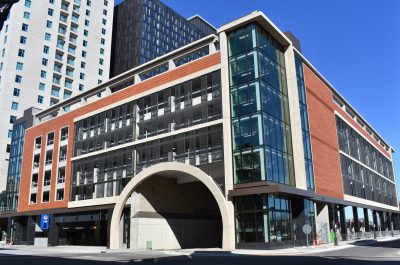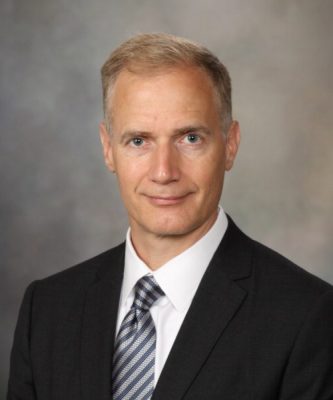
Mayo Clinic spinout and Rochester-based COVR Medical aims to protect patient privacy and dignity during surgical procedures. Driven by a passion to fulfill an unmet medical need, COVR was founded by husband and wife team Dr. Bruce Levy, MD, a Mayo Clinic orthopedic surgeon, and Heather Levy in 2014. With three medical garments currently on the market, COVR is facilitating patient dignity one surgery at a time.
Dr. Levy’s “passion for improving the patient experience” ultimately moved him to become an entrepreneur. During one particular surgical case, he requested a blue towel be used to cover a patient to avoid patient exposure to the entire operating room staff during the procedure. However, the towel kept dropping to the operating room floor during the surgery as the patient was moved, leaving the patient naked and exposed for the majority of the operation.
Distressed by the situation, Dr. Levy searched the market for possible solutions to remedy this problem. Finding none, he decided to create his own solution, a medical garment that could cover and protect patient dignity during surgeries in the groin area while allowing adequate access for medical staff.
In 2014, Dr. Levy utilized Mayo Clinic’s Employee Entrepreneurship Program (EEP) to license the intellectual property for the garment line from Mayo to launch his startup, COVR Medical. Two years later, Dr. Levy presented his idea at the Walleye Tank business pitch competition hosted by the Office of Entrepreneurship at Mayo Clinic in Rochester, Minnesota. COVR Medical won first place.
Since that time, COVR has grown to a five-person team including Dr. Bruce Levy, Cofounder and CEO; Heather Levy, Cofounder and President; Romeo Catracchia, Chief Commercial Officer; Thomas Pavilon, US National Sales Manager, and Donald Cilley, Manufacturing Manager.
COVR, Dr. Levy explains, is a pioneer. The company is not bringing a better product to the market but is instead creating a whole new class of products, which can come with unique challenges. However, he says COVR continues to gain momentum with leading US medical institutions, demonstrating the value of their products.
As a Mayo Clinic surgeon, it felt natural for Dr. Levy and wife Heather to grow their company in this city.
“Understanding and overcoming the challenges of starting a business is no easy task and we are extremely grateful to find a thriving, helpful, and welcoming entrepreneurial climate in Rochester, Minnesota,” Dr. Levy explained.
Through the EEP program, COVR connected with several local consultants and organizations that assist Rochester startups including the Mayo Clinic Business Accelerator, Medical Alley Association, and the Minnesota Department of Employment and Economic Development.
“I remained amazed at how many people unselfishly dedicated their time and expertise in guiding us towards making the right decisions for our company,” he said.
Dr. Levy thinks that “success breeds success” in the Destination Medical Center (DMC) entrepreneurial climate, where thriving startups will allow more startups to launch and grow. He sees the DMC vision to make Rochester a premier medical community of extreme value, especially for healthcare focused startups.
“It’s very much a symbiotic and synergistic relationship between successful entrepreneurs and the supportive organizations that help make them successful,” he said. “I think we can all work collaboratively and mutually benefit from our combined efforts.”
 When is a parking ramp more than just a functional structure for stacking up cars? That question has found an answer with the city of Rochester’s new “Parking Ramp #6,” which opened March 26.
When is a parking ramp more than just a functional structure for stacking up cars? That question has found an answer with the city of Rochester’s new “Parking Ramp #6,” which opened March 26. 



 Rochester, Minnesota continues its high ranking in
Rochester, Minnesota continues its high ranking in If eyes are the window to the world,
If eyes are the window to the world,